Perhaps you are planning to landscape your yard and use the weeping cherry as a focal point, or you already have the tree growing in your garden. Whatever the reason, it is important to determine whether the tree is invasive or not. We have researched the query, and here is what we’ve found.
Generally, weeping cherry trees are not invasive as long as the environment remains favorable to their development. However, the roots could spread when the soil conditions are not optimal. It is best to plant them a considerable distance away from any structure.
That being said, it is advisable to provide the tree with proper care as well as its optimal growing conditions. The article includes the appropriate planting methods along with the ways you can take care of the tree. Please, read on to learn more!
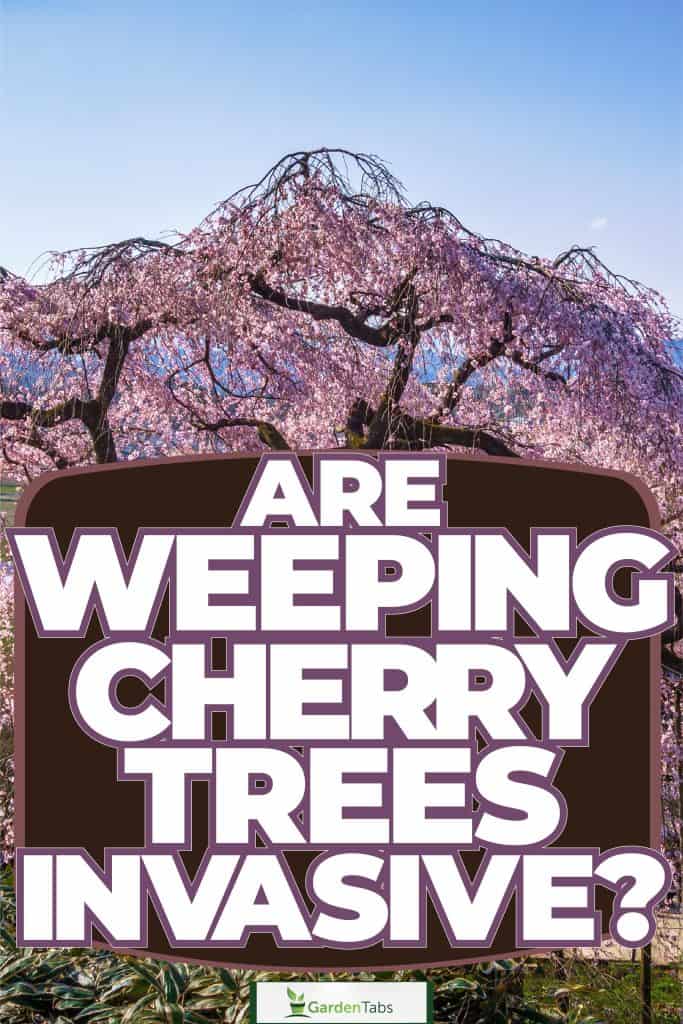
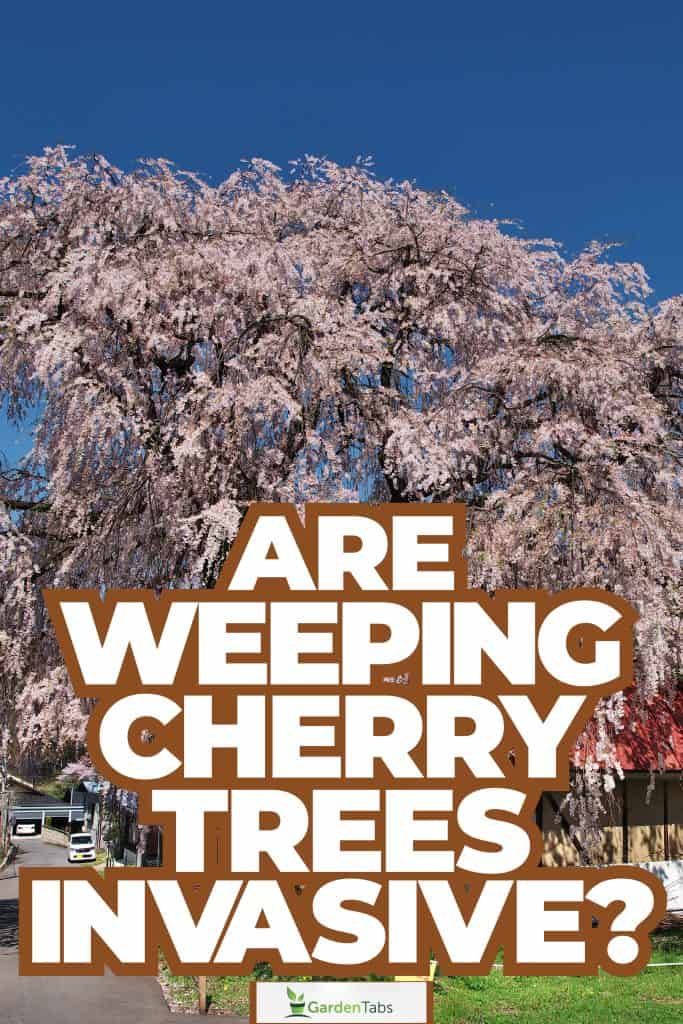
Are Weeping Cherry Trees Good For Your Garden?
Weeping cherry trees are ornamental plants that are a popular addition to any yard, garden, and landscape design because of their arching branches that produce clusters of gorgeous white or pink flowers.
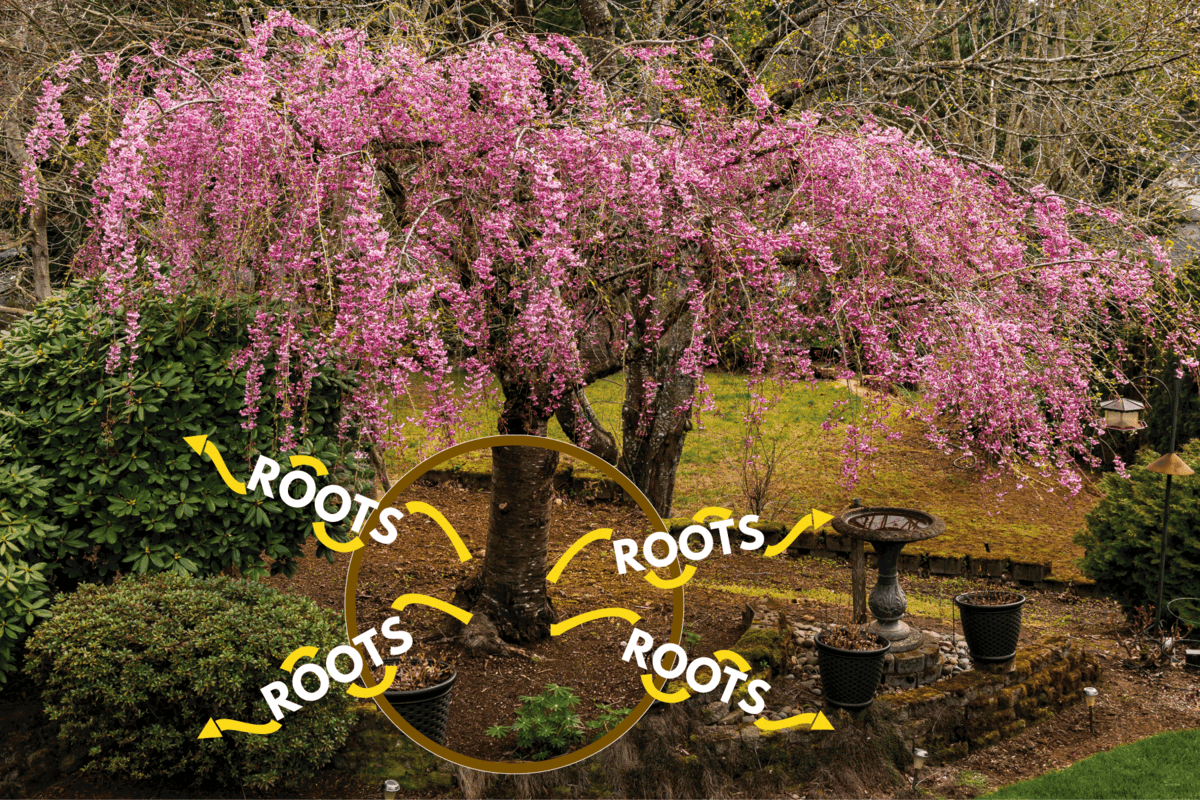
Although it produces inedible sour fruits, it provides birds, squirrels, and other wildlife with food and shelter. Just make sure to properly take care of the plant to prevent its roots from being invasive.
Can I Plant A Weeping Cherry Close To My House?
Roots of mature weeping cherries tend to grow up to 25 feet long. It is not advisable to plant the tree close to your house since its roots forms and extends way beyond the drip line.
Where Is The Best Place To Plant A Weeping Cherry Tree?
Because of its shallow and expanding root system, weeping cherries should be planted at least 25 feet away from any structures, including fences, pavers, driveways, and houses.
Although they are not known to cause considerable damage, it is still ideal to follow the guideline to prevent restricting and harming the tree’s growth as well as causing slight structural problems.
Do Weeping Cherry Trees Stay Small?
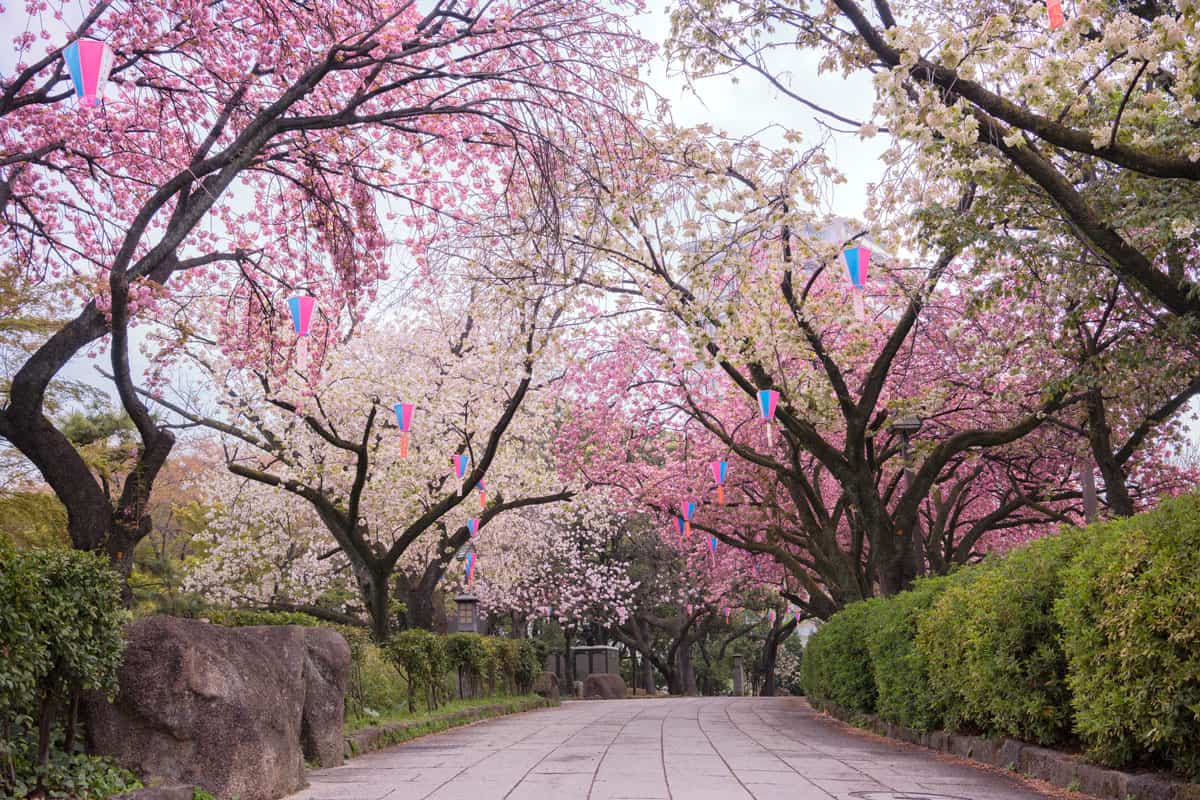
Dwarf varieties reach a mature height of only 6 to 15 feet. These are actually great options for gardens or yards with small spaces. However, remember to plant your tree at least 10 to 12 feet away from any structures to facilitate the root’s growth.
Consider these varieties if you wish to grow weeping cherries, but the area is limited.
The Hiromi weeping cherry is the smallest cultivar that grows only 6 feet tall, while the tallest among the species is the Japanese weeping cherry which reaches 10 feet in height. The Snow Fountain variety has a mature height of 8 feet.
What Makes The Root System Of Weeping Cherry Trees Spread?
Weeping cherry trees possess a shallow root system that extends above the soil's surface and tends to develop in all directions beyond the drip line. It spreads when the conditions needed for the tree's sustenance are inadequate or lacking.
The roots do not tend to be invasive if the soil, water, and nutrient requirements are met and maintained.
Where Do Weeping Cherry Trees Grow Best?
Weeping cherry trees can adapt to different soil profiles, but they thrive best in loose, loamy, well-draining soil.
The roots do not tolerate being compacted and would tend to spread until the ground conditions become less dense. Heavy soil like clay, which tends to retain water, can stunt the growth of the tree.
How Often To Water Weeping Cherry Tree?
Water newly planted and young trees at least twice a week to encourage root depth and proliferation. You can reduce hydration once they are established and become more drought-resistant, but regular moisture will result in better development.
Water twice as much during the summer and less during winter when the tree is dormant.
What Is The Best Fertilizer For Weeping Cherry Trees?
Weeping cherry trees thrive best with organic amendments such as compost and mulch. They help loosen the soil and slowly provide nutrients while decomposing.
Young and developing trees need water-soluble fertilizers with low nitrogen content. The macronutrients will encourage root, leaf, and blossom growth while improving resistance and overall health.
What Are Other Ways To Care For Weeping Cherry Trees?

The root system of a weeping cherry will not spread and become invasive if the growing conditions around the tree are optimal. The following section includes the proper way to care for and maintain your tree.
How Much Sun Do Weeping Cherry Trees Need?
A weeping cherry will thrive best in full sunlight with around 8 hours of exposure a day. This will make the tree develop more rapidly and increase the yield of blooms.
Some varieties can tolerate partial shade, but the flower production will considerably be less, and the foliage will not be as striking and pronounced.
Will Compost And Mulch Benefit Weeping Cherry?
A 3-inch layer of mulch will help retain moisture, regulate temperature and prevent weeds from growing.
Spread the material evenly around the tree without touching the base of the trunk. Avoid applying a thick layer so air can circulate freely around the roots.
If you are just about to plant a tree, you can amend the soil in the surrounding area with organic compost. It would release nutrients beneficial to the development of the young plant and loosen the soil for better drainage.
Does A Weeping Cherry Need To Be Pruned?
The inherent beauty of the weeping cherry lies in its cascading form, best left to grow freely. Trimming the foliage evenly in an attempt to shape the tree can result in an unnatural appearance.
The only areas that need to be pruned are dead, diseased, or damaged branches.
How To Get Rid Of Bugs On Weeping Cherry?
Weeping cherries are prone to insect infestations, including aphids, scales, spider mites, and borers. Using insecticidal soap and neem oil can help alleviate the issue.
Spray neem oil on the foliage and infected portions. The oil coats the surface and acts as a protective layer that prevents insects from feeding on the tree’s leaves.
Check out Natria Neem Oil Spray on Amazon.
On the other hand, insecticidal soaps kill pests by suffocation and dehydration. The chemicals present in the solution dissolve the insects’ protective waxes, which in turn, causes rapid evaporation of their bodily fluids.
Check out Garden Safe Brand Insecticidal Soap on Amazon.
Fertilizing properly as well as following the tree’s hydration requirements, helps in keeping insects at bay.
How To Plant Weeping Cherry Tree?
If you have seen a lush weeping cherry tree in full bloom, it wouldn't be surprising if you would want one in your own yard. These are the steps of planting and ways to ensure they grow beautifully:
What Time Of Year Do You Plant A Weeping Cherry Tree?

You can plant a weeping cherry anytime if you have a young tree picked from a nursery that is several months old.
Younger saplings are best grown during late fall since they are tolerant to cold and can survive overwintering. Planting in springtime may cause the developing foliage of some varieties to suffer during the summertime heat.
Choosing Cherry Tree Variety
Matured weeping cherries can grow 25 to 30 feet high and feature a canopy just as wide. They are an ideal focal point for relatively large gardens and yards.
However, they should be planted a considerable distance from any structure to avoid damage from potential root invasion.
Smaller varieties of weeping cherries, which top at 12 to 15 feet and feature compact foliage, work best with landscapes with limited areas. They may be grown closer together to create more depth and visual appeal.
Preparing The Area For Your Cherry Tree
Pick a sunny spot at least 10 feet away from any tree, a group of plants, and other structures like walls, fences, or concrete walkways.
Remove grass, weeds, rocks, and debris about 3 to 4 feet in diameter around the location and till the topsoil to reveal the composition of the ground.
Amend the medium if the soil is too compact by mixing organic compost over the area and covering a depth of 8 to 12 inches. Loosening the soil will promote better root development and provide excellent drainage.
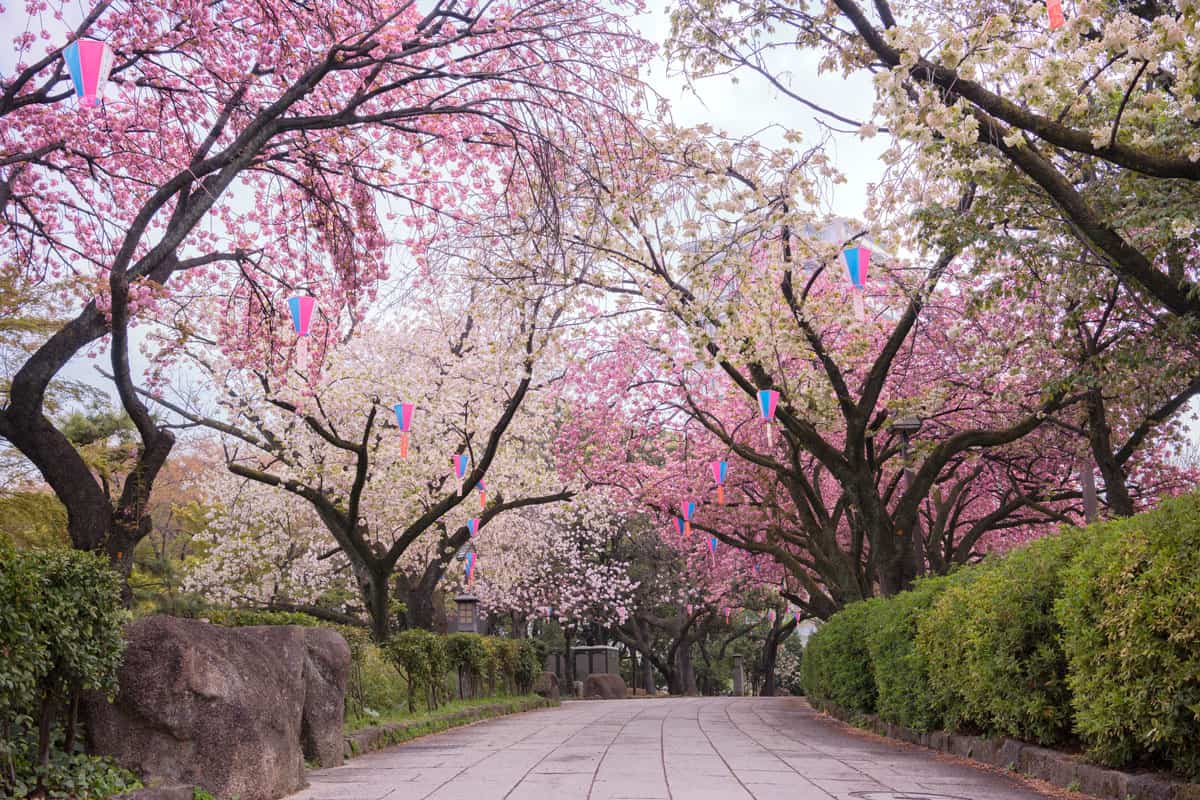
At this point, you have the option of adding a mild, all-around, slow release fertilizer to enrich the ground with essential elements.
What Is The Final Stage Of Planting?
Dig a hole deep and wide enough to accommodate twice the size of the rootball. Carefully position the young tree and fill it with composted soil.
Water the area thoroughly to make the medium settle evenly over and around the roots. You can gently prod the upper layer several times with a chopstick to eliminate air bubbles.
In Closing
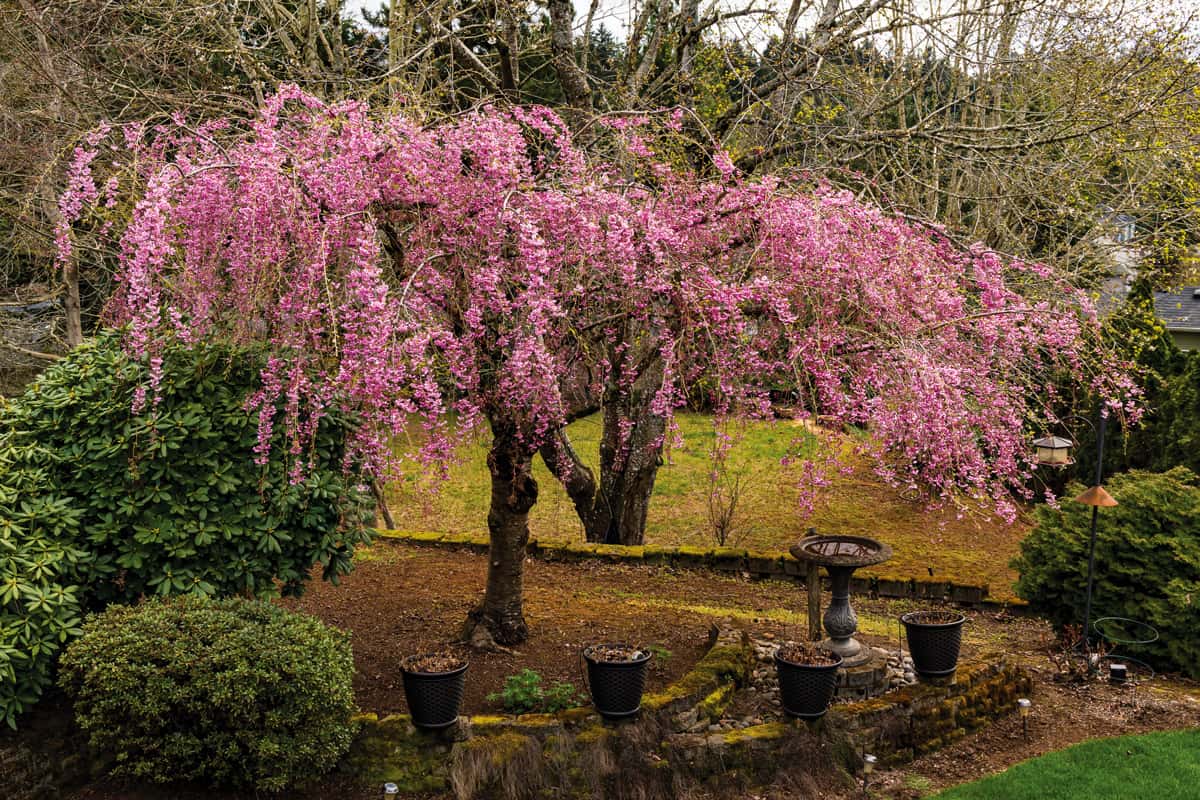
If weeping cherry trees are nourished properly, their root systems do not become invasive. Maintain adequate moisture in well-draining, loose fertile soil and provide regular amendments to enrich the nutrient content of the root's environment. We hope the article has been informative.
You might also find these topics helpful:



